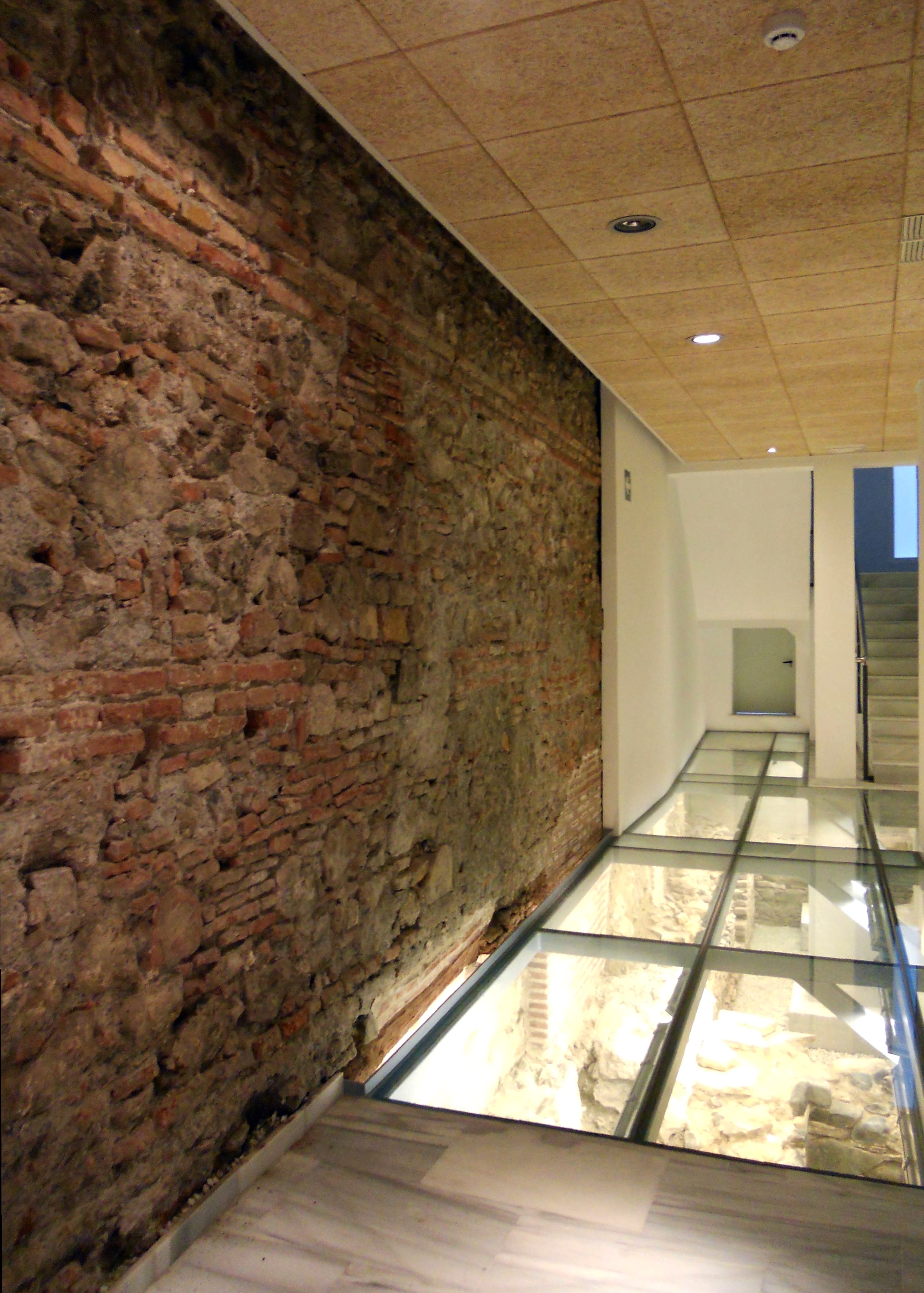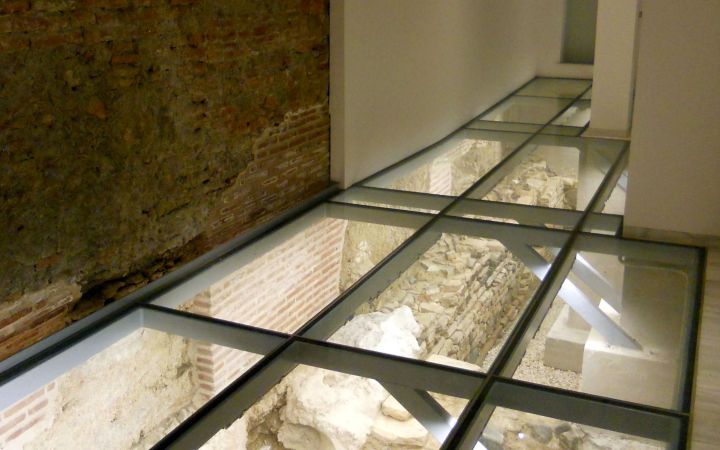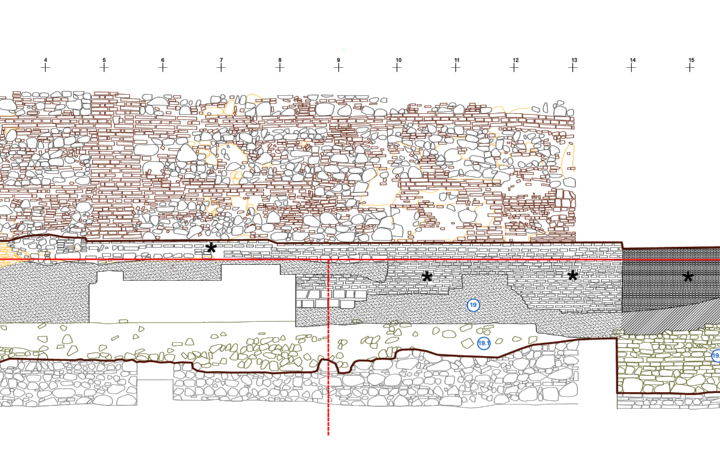MUSEO INTERACTIVO DE LA MÚSICA –MIMMA- EN CALLE BEATAS, 15
LIENZO MURALLA
Durante la rehabilitación del Palacio del Conde de las Navas, destinado a sede del Museo Interactivo de la Música, fueron identificados sobre restos de ocupación romana de los siglos III-V más de 16 metros de la muralla medieval que conforman la medianería norte del edificio actual.
La obra original de la cerca medieval, datada del siglo XI, ha perdido sus paramentos exteriores quedando sólo el núcleo de aparejo de mampostería en el que se emplearon piedras y restos de ladrillo.
En época almohade (siglo XII) se levantó una nueva estructura defensiva sobre los restos de la muralla anterior, parte de la cual ha pervivido en este patio posterior del la Palacio del Conde de las Navas. Se trata de un encofrado de hormigón de cal y grava, enlucido en su cara interna con una fina capa de mortero.
Finalmente, se puede apreciar un fragmento de estructura de mampostería encintada encastrada entre los restos de la muralla anterior y la medianera del edificio rehabilitado, reconocida como perteneciente a la reforma de Yusuf I (siglo XIV).
Director de la actividad: Pedro Sánchez Bandera
(Arqueosur, Estudio Arqueología, S.L)
MUSEO INTERACTIVO DE LA MÚSICA –MIMMA- IN BEATAS STREET, 15
STRETCH OF WALL
During the renovation of the Palacio del Conde de las Navas, now the Museo Interactivo de la Música, more than 16 metres of the medieval wall, that make up the northern party wall of the current building, were identified on remains of Roman occupation from the 3rd-5th centuries.
The original work of the medieval fence, dating from the 11th century, has lost its outer facings, remaining only the core of masonry in which stones and brick remains were used.
A new defensive structure was built over the remains of the previous wall during the Almohad period (12th century), part of which has survived in this rear courtyard of the Palacio del Conde de las Navas.It is a concrete formwork of lime and gravel, plastered on the inside with a thin layer of mortar.
Finally, a fragment of a taped masonry structure can be seen embedded between the remains of the previous wall and the party wall of the rehabilitated building, recognized as belonging to the reform of Yusuf I (14th century).
Activity Director: Pedro Sánchez Bandera
(Arqueosur, Estudio Arqueología, S.L)



